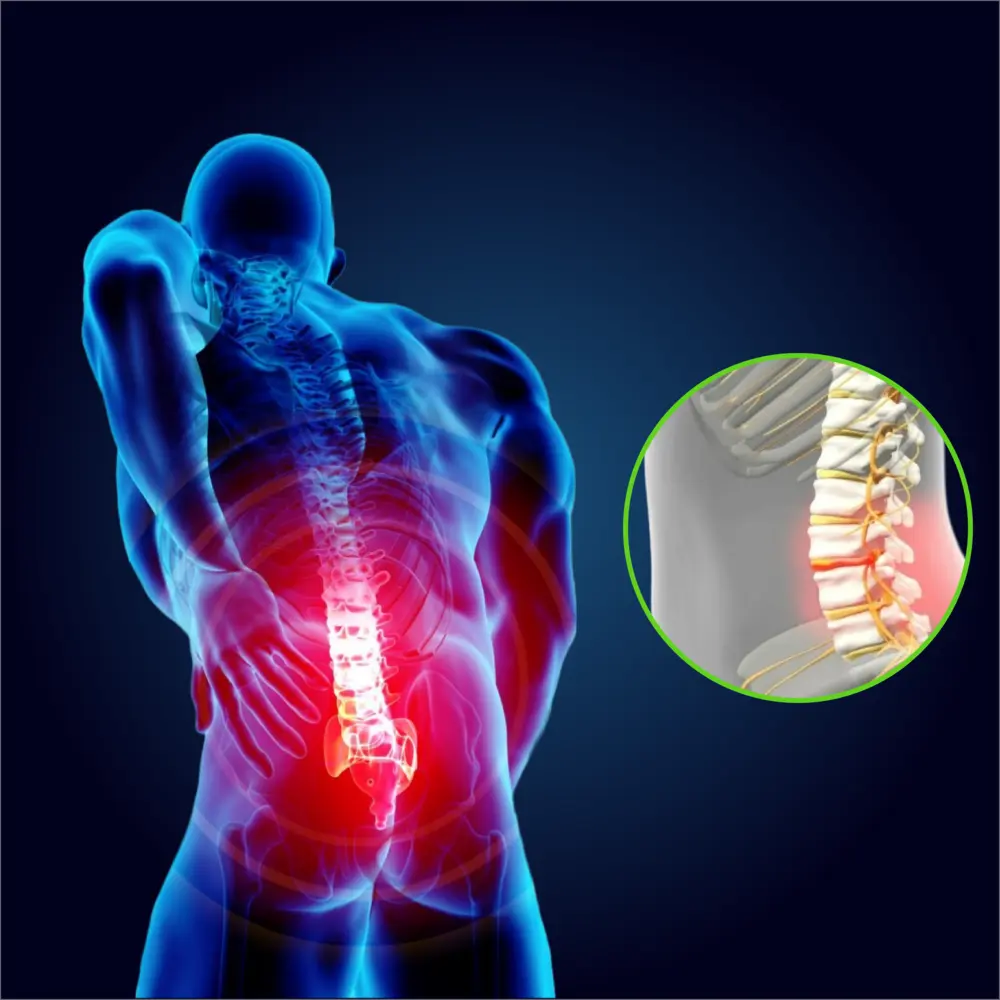SLIPPED DISC
The wear and tear in the spine can cause damage in soft muscle tissue which can lead to excess pressure on bones and disc. This causes the disc to move from its alignment and cause disc herniation (commonly called a slipped disc) It causes pain and difficulty handling day-to-day activities. In order to get the right treatment in a timely manner, these are the symptoms to watch out for:
- Sudden and shooting pain: You may also experience that the pain in the upper back radiates to the arms and the pain in the lower back radiates to the pelvis and legs.
- The pain lasts for hours to several weeks at a stretch
- You cannot sit or stand for a long period of time. In fact, sitting or standing for a long time only increases the pain. When you change your body position, you notice that the pain reduces.
- Frequent and painful muscle spasms.
Get immediate medical care if:
- You experience paralysis or lose sensation in your pelvis and legs: This is the Cauda Equina Syndrome (CES) and needs immediate attention.
- You experience numbness and lose bowel or bladder control.
- Radiating pain transfers to your arms or legs: This is caused by ‘Sciatica’ and the pain is caused by a slipped disc pressing against the nerve endings leading to your limbs.
- Loss of balance
- Weakness in the hands and feet
The most common causes of slipped disc is aging, overloading or injury .
Over time, the hard encasement of the disc becomes brittle, and the gel inside slips through the cracks. However, there are other lifestyle-related causes like:
- Strain and Occupational Stress: People in more physically demanding jobs are prone to a slipped disc.
- Obesity and genetic factors: The excess weight in the body puts prolonged pressure on the back-bone, leading to a slipped disc.
- Accidents and Injuries: Unexpected physical damage from accidents can crack the vertebrae and even cause a slipped disc.
- Gender: Studies have shown that men are more prone to slipped discs than women.
Most slipped-disc cases can be treated non-surgically, with the aid of Non-surgical decompression and Physiotherapy. Please seek treatment if symptoms persist over time.
Depending on the severity of the case, a slipped disc can be treated in the following ways:
- Medication and pain management: Pain can be controlled with various pain relief treatments including medication.
- VerteCare Spine offers a Non-surgical spinal segment Decompression using Vax-D technique to reduce the herniated disc, improve nutrition of the discs, promote healing and provide relief from symptoms.
- Spine rehabilitation: There are multiple approaches to physical therapy in spine care and they can stabilize the spine and help patients with disability or restricted physical movement. This helps improve the mechanical functioning of the spine, manages pain, promotes regeneration of the affected tissue and disc, and with functional training, improves strength and flexibility.
Even in case of surgery, follow-up rehabilitation helps sustain and improve the results.
Surgery:
A small percentage of patients, not improving on medications, Physical therapy and Non-surgical decompression may eventually need surgery for removal of the disc.

